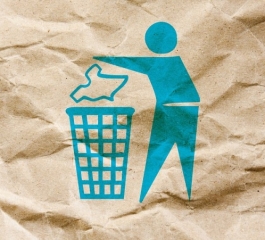How to dispose of clothes correctly?
Disposing of clothing in a responsible and sustainable way is seen as a problem for many people, however, it is not impossible. When carrying out disposal, it is worth considering the following options:
1.Donation:
If the clothes are still in good condition, you might consider donating them to charities, shelters, or thrift stores.
That way, other people will be able to use them, which will help extend the useful life of the parts.
2. Textile recycling:
In certain regions, there are textile recycling programs that collect clothes and transform them into new products or materials.
It is therefore important to research whether there are collection points or companies specializing in textile recycling in your area.
This will allow you to contribute to a more sustainable and responsible cycle regarding the disposal of old clothes.
3.Proper disposal:
If the clothing is in very poor condition and cannot be reused or recycled, you should actively seek information on appropriate textile waste disposal sites in your area.
4.Sale:
If your clothes are in good condition, you have the option of selling them at flea markets or online selling platforms.
This way, you can give these pieces a second life and contribute to the circular economy, while enjoying extra space in your closet.
5.Upcycling:
If you have sewing skills or know someone who does, you can breathe new life into old clothes by turning them into useful items and creative projects.
For example, you can make reusable bags, pillows or decoration pieces, making the most of the potential of these clothes.
This not only reduces waste, but also allows you to express your creativity in a sustainable way.
6.Repair and Repair:
When you come across damaged clothing, it is advisable to consider repairing it rather than opting for immediate disposal.
Minor repairs often have the ability to significantly extend the life of a part.
So instead of discarding it prematurely, look for simple solutions to conserve and make the most of your garments.
Environmental problems associated with incorrect disposal of clothing
But after all, what is the importance of carrying out the correct disposal of clothes?
Well, by disposing of it incorrectly, you will also cause a number of significant environmental problems, including:
1.Soil and water pollution:
When clothing is improperly disposed of in landfills or simply left out in the open, it slowly decomposes, releasing toxic chemicals and dyes into the soil and water.
This ends up contaminating natural resources, thus harming biodiversity.
2.Sewerage of sanitary landfills:
Improper disposal of clothing is rapidly contributing to filling landfills, becoming an issue of concern in many regions of the world.
This is because when clothes are not disposed of properly, they take up space in landfills where they could be avoided if they were reused, donated or recycled properly.
3.Impact on marine life:
When we wash clothes made from synthetic fibers or when these garments decompose, the fibers are released and reach the oceans, thus negatively impacting marine life.
Smaller marine animals, including fish and plankton, have the ability to ingest these particles composed of microscopic plastic, leading to the accumulation of these wastes along the marine food chain.
Overall, this poses a significant threat to the ecology of the oceans and the beings that depend on this environment for survival.
Conclusion
In conclusion, the article addresses the importance of understanding the origin of clothing and practicing proper disposal.
It is recommended to donate, recycle or sell old clothes to extend their useful life and avoid negative environmental impacts.
Improper disposal can cause soil pollution, deplete landfills and threaten marine life.
Therefore, awareness and sustainable actions are essential to preserve the environment.


